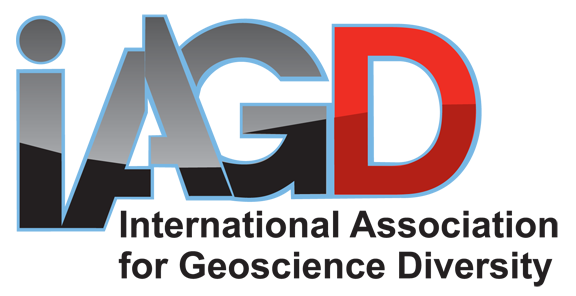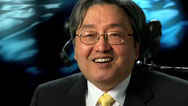By Douglas Quenqua
The New York Times: Science
Imagine trying to learn biology without ever using the word “organism.” Or studying to become a botanist when the only way of referring to photosynthesis is to spell the word out, letter by painstaking letter.
For deaf students, this game of scientific Password has long been the daily classroom and laboratory experience. Words like “organism” and “photosynthesis” — to say nothing of more obscure and harder-to-spell terms — have no single widely accepted equivalent in sign language. This means that deaf students and their teachers and interpreters must improvise, making it that much harder for the students to excel in science and pursue careers in it.
“Often times, it would involve a lot of finger-spelling and a lot of improvisation,” said Matthew Schwerin, a physicist with the Food and Drug Administration who is deaf, of his years in school. “For the majority of scientific terms,” Mr. Schwerin and his interpreter for the day would “try to find a correct sign for the term, and if nothing was pre-existing, we would come up with a sign that was agreeable with both parties.”
Now thanks to the Internet — particularly the boom in online video — resources for deaf students seeking science-related signs are easier to find and share. Crowdsourcing projects in both American Sign Language and British Sign Language are under way at several universities, enabling people who are deaf to coalesce around signs for commonly used terms.
This year, one of those resources, the Scottish Sensory Centre’s British Sign Language Glossary Project, added 116 new signs for physics and engineering terms, including signs for “light-year,” (hold one hand up and spread the fingers downward for “light,” then bring both hands together in front of your chest and slowly move them apart for “year”), “mass” and “X-ray” (form an X with your index fingers, then, with the index finger on the right hand, point outward).
The signs were developed by a team of researchers at the center, a division of the University of Edinburgh in Scotland that develops learning tools for students with visual and auditory impairments. The researchers spent more than a year soliciting ideas from deaf science workers, circulating lists of potential signs and ultimately gathering for “an intense weekend” of final voting, said Audrey Cameron, science adviser for the project. (Dr. Cameron is also deaf, and like all non-hearing people interviewed for this article, answered questions via e-mail.)
Whether the Scottish Sensory Centre’s signs will take hold among its audience remains to be seen. “Some will be adopted, and some will probably never be accepted,” Dr. Cameron said. “We’ll have to wait and see what happens.”
Ideally, the standardization of signs will make it easier for deaf students to keep pace with their hearing classmates during lectures. “I can only choose to look at one thing at a time,” said Mr. Schwerin of the F.D.A., recalling his science education, “and it often meant choosing between the interpreter, the blackboard/screen/material, or taking notes. It was like, pick one, and lose out on the others.”
The problem doesn’t end at graduation. In fact, it only intensifies as new discoveries add unfamiliar terms to the scientific lexicon. “I’ve had numerous meetings where I couldn’t participate properly because the interpreters were not able to understand the jargon and they did not know any scientific signs,” Dr. Cameron said.
One general complaint about efforts to standardize signs for technical terms is the idea that, much like spoken language, sign language should be allowed to develop organically rather than be dictated from above.
“Signs that are developed naturally — i.e., that are tested and refined in everyday conversation — are more likely to be accepted quickly by the community,” said Derek Braun, director of the molecular genetics laboratory at Gallaudet University in Washington, D.C., which he said was the first biological laboratory designed and administered by deaf scientists.
Since at least the 1970s, deaf scientists have tried to address the lack of uniformity by gathering common signs for scientific terms in printed manuals and on videotapes. The problem has always been getting deaf students and their interpreters to adopt them.
Often, at science conferences, “local interpreters that we never met before would often use different signs for the same terms, leading to confusion,” said Caroline Solomon, a biology professor at Gallaudet University who is deaf.
Gallaudet has tried to take a democratic approach to the problem: it collaborates on the ASL-STEM Forum, a wiki-style Web site dedicated to “enabling American Sign Language to grow in science, technology, engineering and mathematics” that was set up in 2009 by researchers at the University of Washington. Anyone can submit, critique and vote for science signs, which are demonstrated in short videos. The idea is to let those who are hearing-impaired and learning science decide which new signs should become standard.
So far the crowdsourcing approach seems to be effective, at least at Gallaudet. While “many of the signs posted on the ASL-STEM Forum are by Gallaudet students and faculty,” Dr. Solomon said, and therefore are already in use on campus, there have been other signs “posted by non-Gallaudet users that we like better and have started to use ourselves.”
Making sciences more accessible to the deaf is a priority not just to those with hearing problems, but also to science educators in general. As they look to ease a worldwide shortage of STEM teachers, groups like the Institute of Physics, a global scientific society based in London, are financing projects that make it easier for people with disabilities to enter careers in science.
“We not only want to provide support, we want to raise aspirations, to say to people, ‘you can do this,’ ” said Peter Main, director of education and science at the institute, which helped finance the Scottish sign language project.
Surprisingly, some deaf students say that relying on sign language gives them an advantage over hearing students. Because it is acted out, with everything from facial expressions to speed of motion available as tools to convey meaning, and because it is in many ways less codified than written language, sign language can illustrate difficult scientific principles better than traditional languages can.
“There’s often a lot of confusion in early years of physics between mass and weight” for hearing students, because the two concepts are so similar, said Mr. Main, who is not deaf. But because mass has no universally accepted sign, interpreters are free to create hand motions that illustrate its meaning specifically in opposition to weight.
For example: “If I wanted to indicate mass, I would probably hold up a balled fist,” said Kate Lacey, an interpreter at George Washington University who often works with science students. “Then, to indicate weight, I’d drop that fist toward the floor.” The implication is that weight represents gravity’s effect on mass, which is about as clear a definition as one is likely to find.
Such elegant personifications of tricky scientific concepts leave some deaf students feeling sorry for those who rely on their ears. “One of my students was telling me recently that she can’t imagine the difficulty that hearing instructors must have in describing concepts through spoken English, because of the linearity of spoken language,” Dr. Braun said.
To access the full article, click here.




